
By J. Michael Roddy
ORIGINS & INFLUENCES — THE SUMMER THAT CHANGED EVERYTHING
In the summer of 1975, I was six years old — already obsessed with monsters, dinosaurs, and disaster films. I vividly remember standing outside a local Florida theater, staring at that bold red title: JAWS. At the time, I assumed it was about teeth. My father, a fisherman, corrected me: “It’s about a shark.” That was all I needed to hear. Dinosaurs and sharks — the two most captivating creatures in a young boy’s world. And that weekend, my parents took me to see it.
I didn’t just watch JAWS. I experienced it.
The collective gasp of the audience, the rollercoaster of tension and release, the nervous laughter after each scare — it wasn’t just a movie; it was electricity. That summer, my backyard transformed into my own personal Amity Island. The swing set became the Orca. My Mego Captain Kirk and Dr. McCoy figures repeatedly met their doom in a plastic kiddie pool, courtesy of a rubber shark replica. I reenacted Quint’s death daily, only to miraculously revive myself as Brody, rifle in hand.
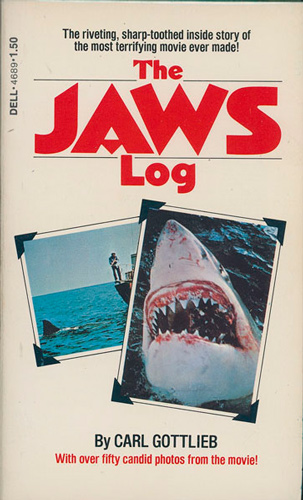 Then one day, at the local supermarket, I discovered Carl Gottlieb’s The JAWS Log.
Then one day, at the local supermarket, I discovered Carl Gottlieb’s The JAWS Log.
Too advanced for my six-year-old mind, but filled with pictures — and one, in particular, changed everything.
It showed the shark underwater attacking Hooper — but in the corner, there was a man with a camera. Suddenly it clicked: someone made this movie. That single moment planted a seed that would eventually define my life.
JAWS became more than just a story for me — it was my introduction to the art of filmmaking, to the magic of storytelling, and to the idea that ordinary people could create extraordinary worlds.
When I first stepped into the world of JAWS as one of the producers of The Shark Is Still Working, I thought I understood its impact.
But the deeper I went, the more I discovered that JAWS is not simply a film — it’s a convergence of storytelling instincts, historical happenstance, and cultural timing that few creative works ever achieve.
It all began, of course, with Peter Benchley’s 1974 novel. Benchley’s family ties to Nantucket — where legends of seafaring lore, whaling epics, and man-versus-nature battles echo through generations — fed into his imagination. But it was the real-world horror of the 1916 Jersey Shore shark attacks that planted the seed for his tale of terror. Those tragic encounters, coupled with Benchley’s fascination with the unknown world beneath the waves, ultimately birthed his novel — a psychological thriller rooted as much in human fear as in natural horror.
Enter Steven Spielberg, a 26-year-old director with just one feature under his belt.
His blend of youthful audacity and razor-sharp instinct would transform Benchley’s book into something far more primal and cinematic.
The mechanical shark may have famously malfunctioned, but those failures forced Spielberg to rely on suggestion and suspense — a masterstroke that elevated JAWS into Hitchcockian territory.
As I interviewed many who worked on the film during the making of The Shark Is Still Working, it was clear: Spielberg didn’t just make a shark movie.
He made the shark movie.
CULTURAL SEISMIC WAVE
What followed was not just box office success — it was a cultural quake.
JAWS essentially invented the modern summer blockbuster. Universal’s aggressive marketing campaign — with its iconic poster, John Williams’ ominous two-note score, and wide-release strategy — set a new precedent for event filmmaking. As one of the first films to pair massive TV marketing with a synchronized national rollout, JAWS created a feeding frenzy at the box office that studios have been chasing ever since.
Merchandising followed. T-shirts, magazines, rubber sharks, model kits, and games carried the fin far beyond theaters. The movie transformed how Hollywood viewed cross-platform revenue, laying the groundwork for the franchise-driven tentpole system we see today.
But JAWS also infiltrated public consciousness in deeper ways.
It reshaped public perceptions of sharks and beaches. It inspired generations to dive into marine biology — or avoid the ocean altogether. And it pushed forward important conversations about ocean conservation, leading many — including Benchley himself later in life — to advocate for shark protection.
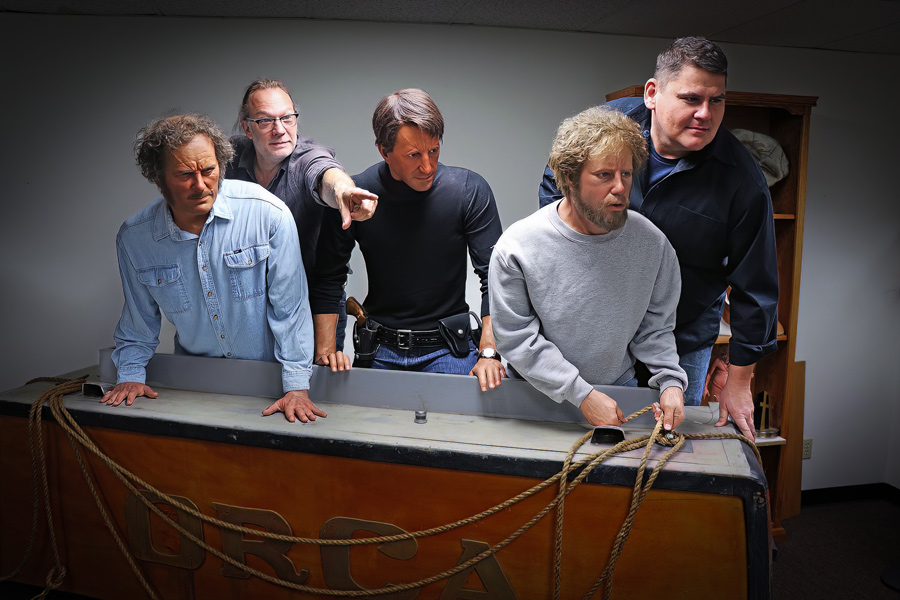
The author and Greg Nicotero (TV director/producer/ SPFX make-up creator) with the crew of The Orca. (Photo by Mark Burton)
CREATIVE RIPPLE EFFECT
As one of those fortunate enough to call myself both a student and a participant in the legacy of JAWS, I’ve seen firsthand how its creative ripples continue to touch artists across disciplines.
Filmmakers like Renny Harlin (Deep Blue Sea), Kevin Smith (Clerks), Robert Rodriguez (From Dusk Till Dawn), Jon Turteltaub (The Meg), and even animators at Pixar (Finding Nemo) openly acknowledge the influence. Writers crafting suspense thrillers often cite Spielberg’s use of pacing, silence, and dread as a masterclass. Game designers borrow its structure of tension-and-release to keep players hooked. Haunt designers (guilty as charged!) even borrow its lessons in primal fear: the terror of what you can’t see is always more potent than what you can.
Fan culture has exploded into new realms as well. “Sharktivist” artists use JAWS iconography to raise awareness for ocean conservation. Themed art shows regularly pay tribute. Theme park attractions — like Universal’s JAWS ride, which became its own pop-culture landmark — extended the film’s mythology into physical space. And now, as AI technology matures, fans are creating sophisticated fan films, blending their love of JAWS with cutting-edge tools that Spielberg himself could only dream of in 1975.
LEGACY & FUTURE
So why does JAWS still loom so large 50 years later?
Because it speaks to something eternal: the collision between human arrogance and nature’s indifference. It taps into our primal wiring — the fear of the unseen predator lurking just below the surface — and packages it in a story about community, heroism, and survival. The shark may be the monster, but the real drama is deeply human.
And new voices are carrying the torch. Documentarians continue to explore the film’s making and legacy. Conservationists leverage its cultural footprint to promote shark awareness. Fan creators, armed with tools unimaginable to Spielberg and company, are crafting tributes that keep the fin slicing through fresh waters.
In 2005, I was hired by Valerie Richards of the Martha’s Vineyard Chamber of Commerce to serve as Creative Director for the first-ever JAWSfest, an island-wide celebration staged right where the film was shot.
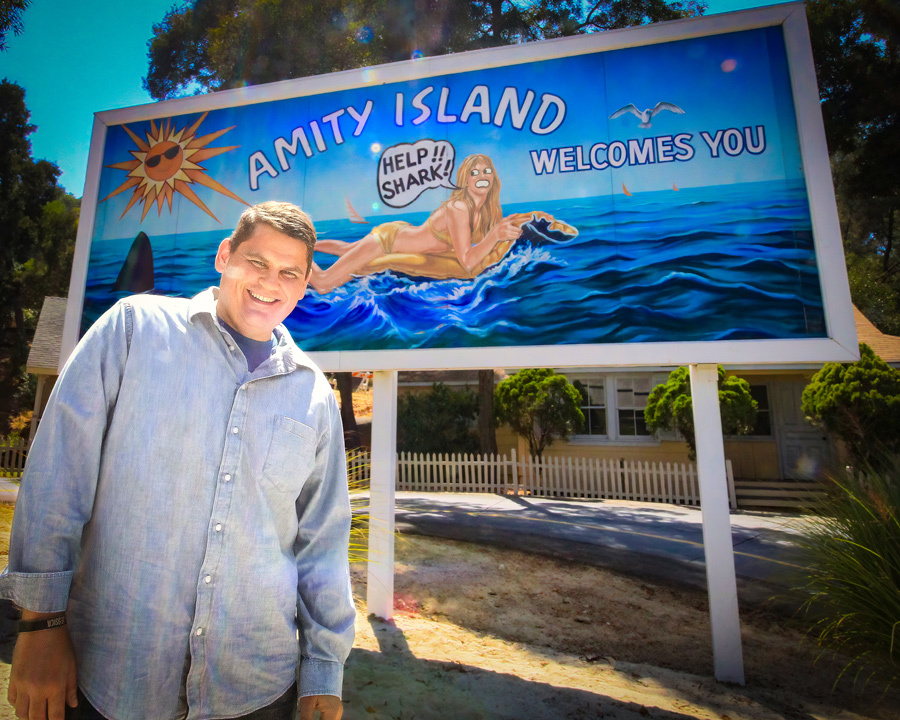
Photo by Eric Vespe
Standing on those familiar beaches where my favorite film was born was surreal. That experience sparked an idea: to tell the story of JAWS from a fan’s unique perspective.
The project morphed into The Shark Is Still Working — the documentary I ultimately produced alongside Erik Hollander, Michael McCormack, James Gelet, and Jake Gove under our production banner, Finatic Films. (Yes — FINatics, a wordplay I coined during that first JAWSfest, which happily seems to have stuck with the fan community.)
One of the most profound moments for me during production was interviewing Roy Scheider.
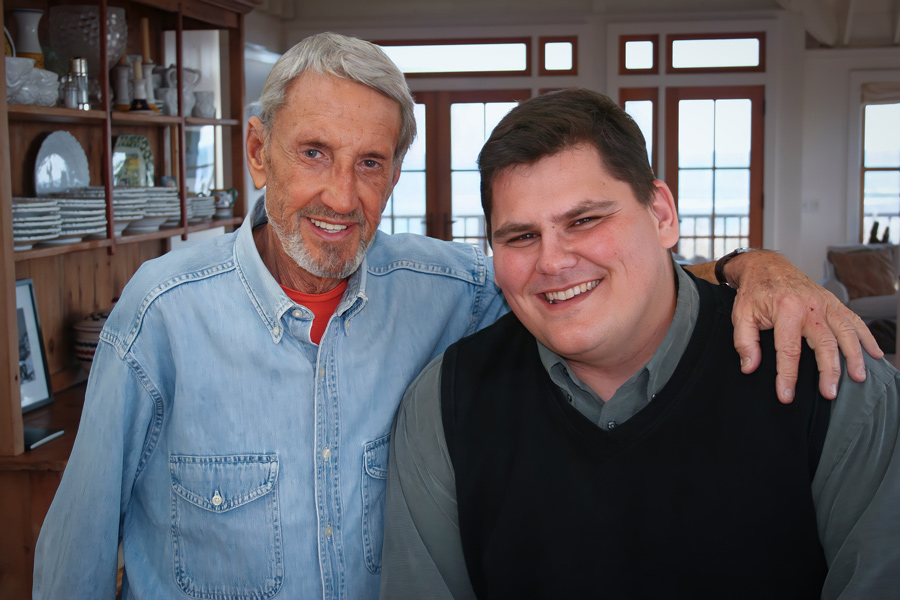
Photo By Erik Hollander
Having grown up idolizing Chief Brody, I feared meeting the man behind the role might risk tarnishing my childhood image. Instead, Roy was exactly as I had always hoped: disarming, kind, generous, and entirely gracious. He was Chief Brody both onscreen and off.
Throughout the documentary, I also had the chance to meet and interview many of the actors, artists, and filmmakers I had visualized for decades. Each brought an extraordinary warmth, humor, and humility to the process. People who had every right to be distant icons instead greeted us with open arms — another testament to the camaraderie JAWS continues to foster.
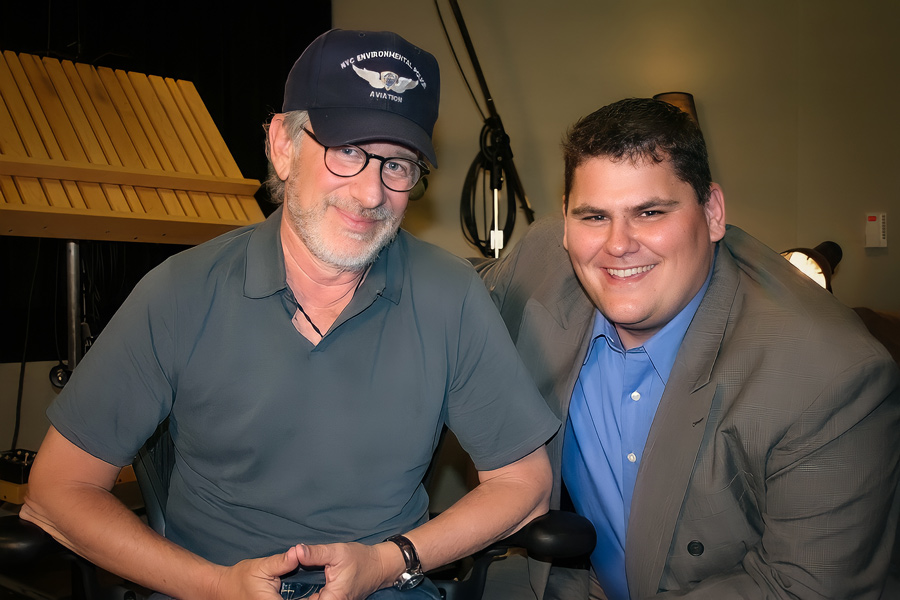
Photo By Erik Hollander
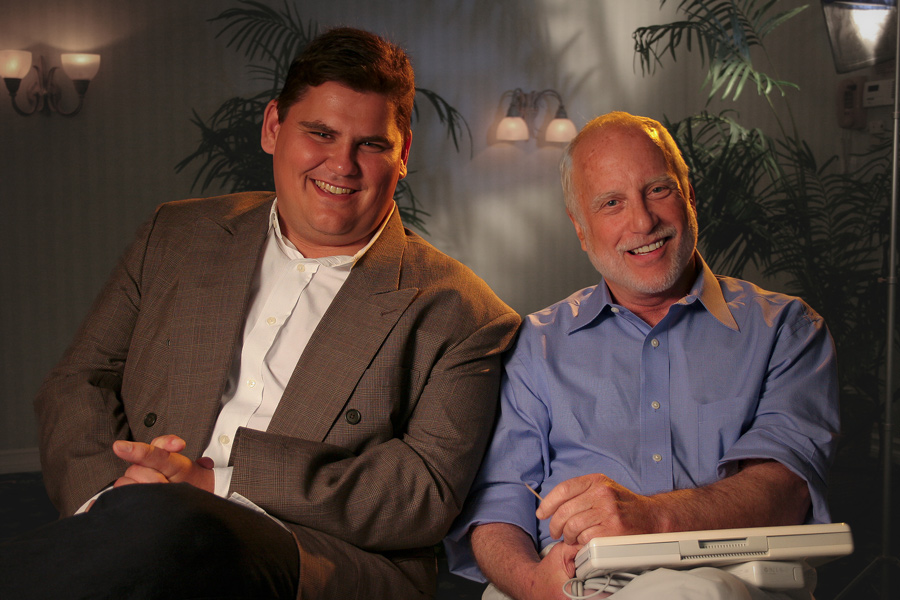
Photo By Erik Hollander
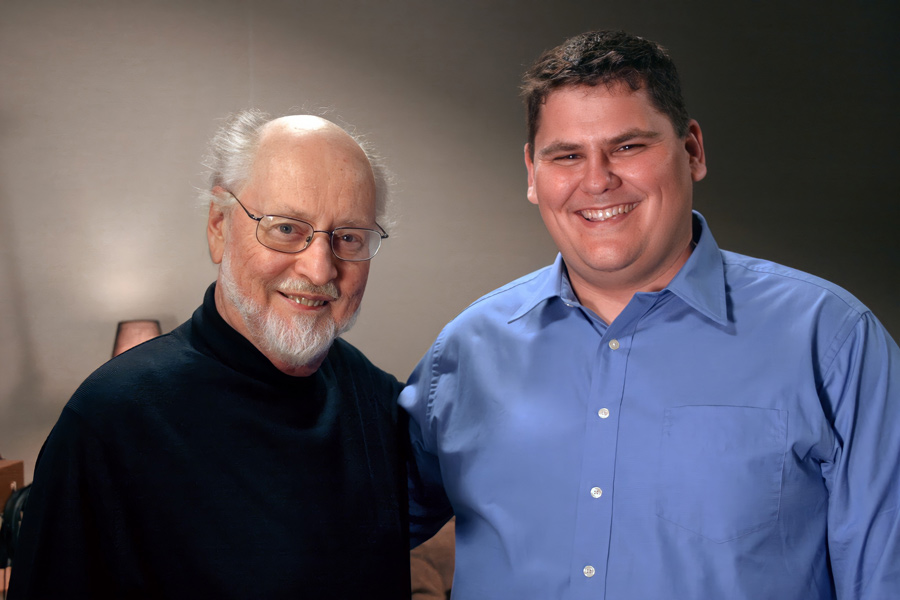
Photo By Erik Hollander
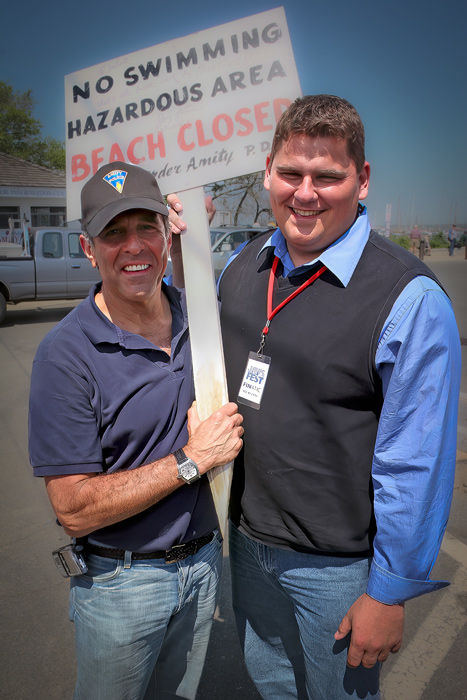
Photo By Erik Hollander
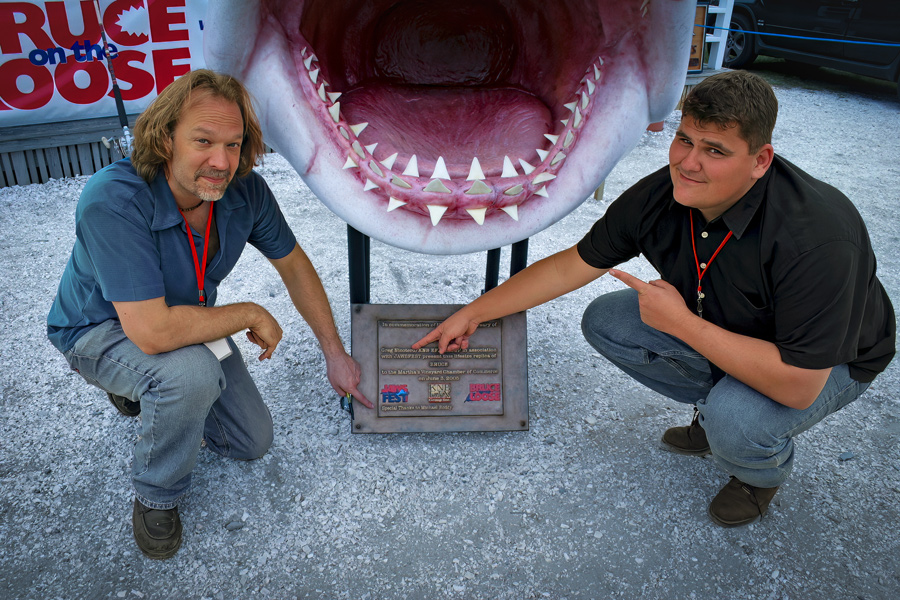
Photo by Mark Burton
As I learned while producing The Shark Is Still Working, JAWS isn’t just a film frozen in time. It’s a living thing — a myth, a metaphor, and a creative engine that continues to inspire filmmakers, fans, and yes — FINatics — across generations.
Because as any fan knows: You’re gonna need a bigger boat…
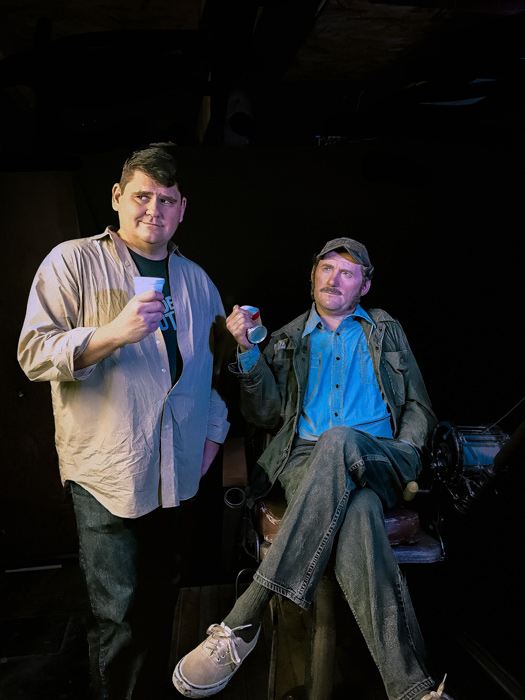
The author with Quint replica (Created by and Photo by Nick Marra)
ABOUT J. MICHAEL RODDY:
J. Michael Roddy is a writer, filmmaker, and creative producer with a lifelong passion for storytelling. His work spans documentary filmmaking, live entertainment, and immersive experiences. Michael was a producer on the acclaimed documentary The Shark Is Still Working, a deep dive into the enduring legacy of JAWS, a film that captured his imagination as a child and helped spark his creative journey. With years of experience bringing stories to life across multiple mediums, Michael continues to explore the intersection of art, culture, and personal passion. www.michaelroddystoryteller.com




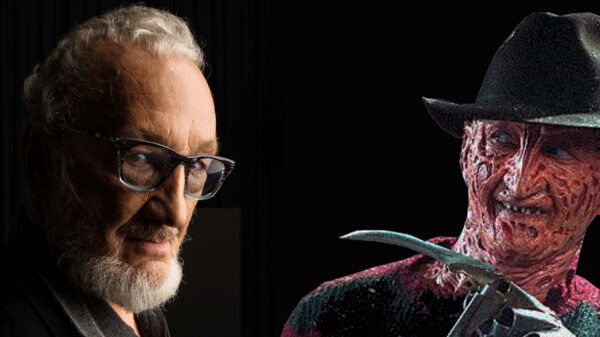
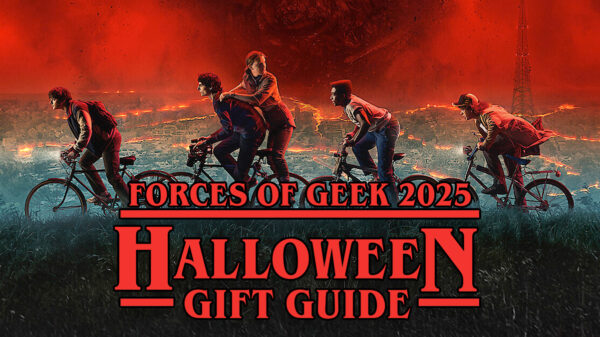
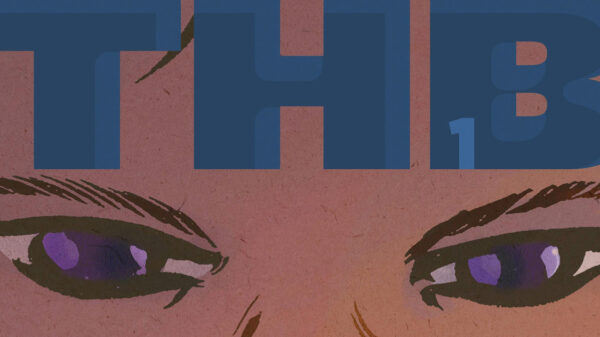

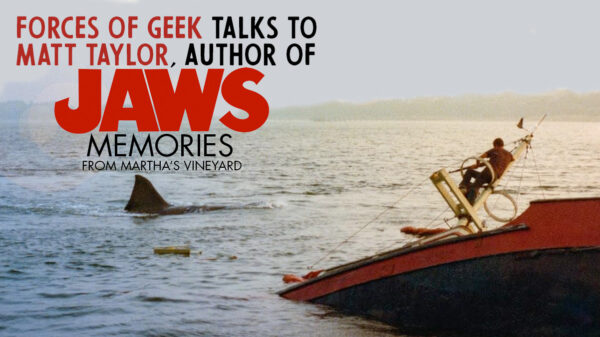
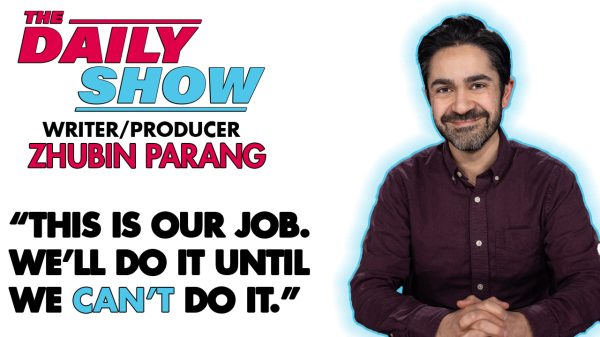
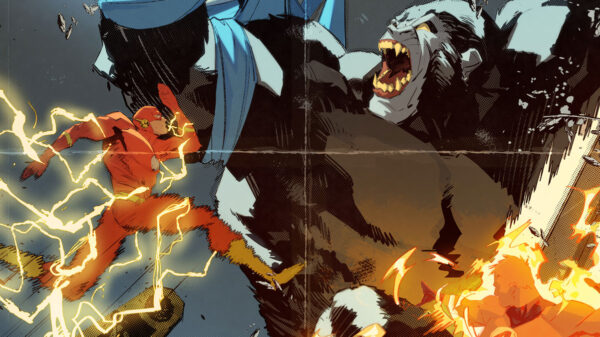
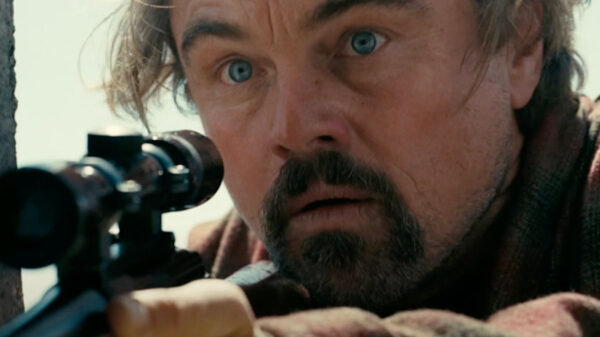
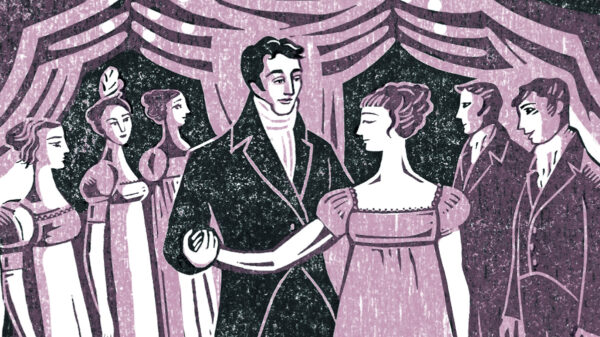
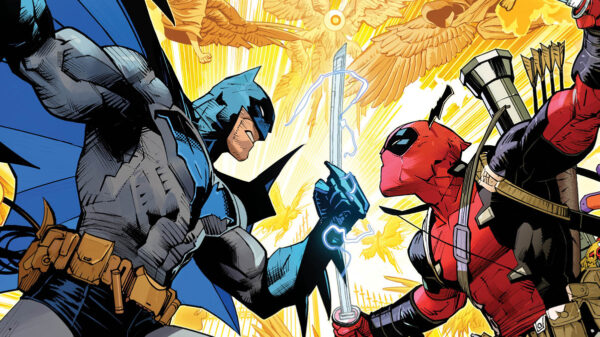
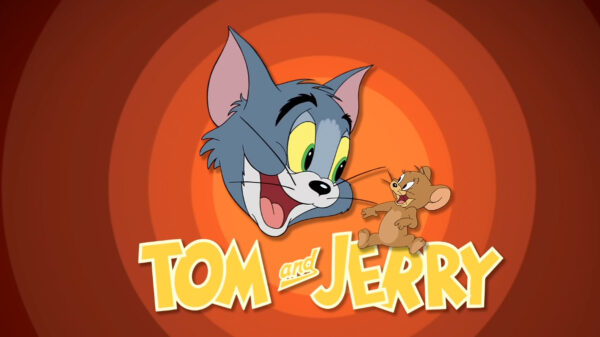





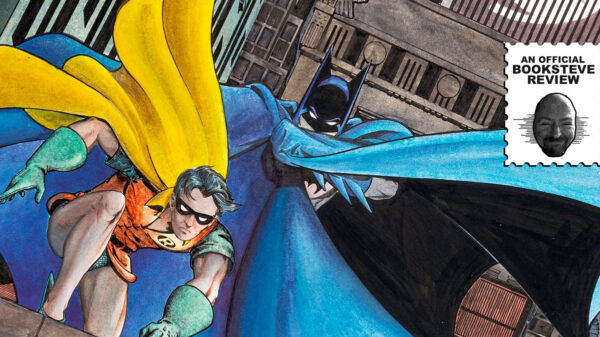
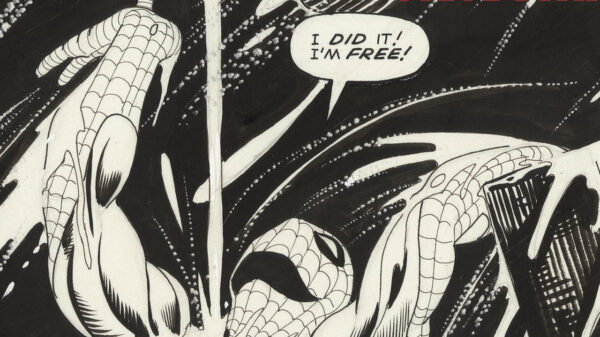
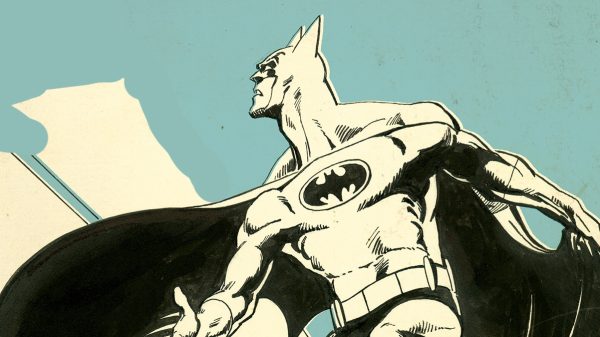

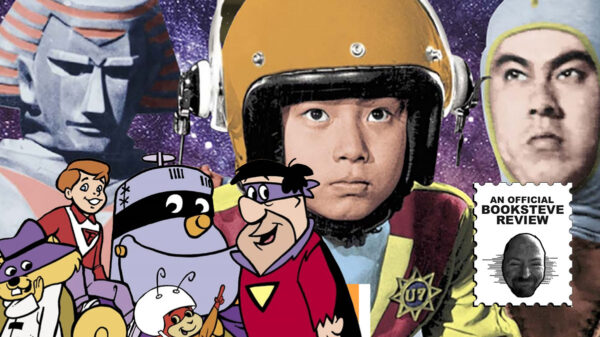
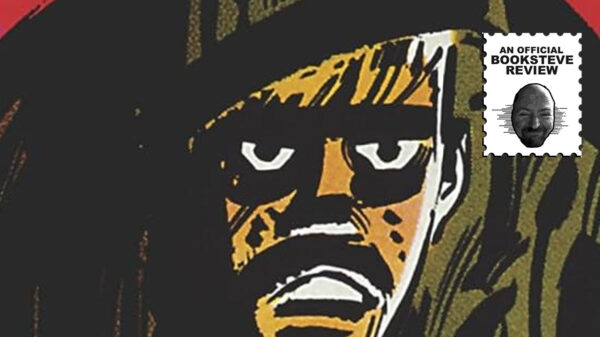
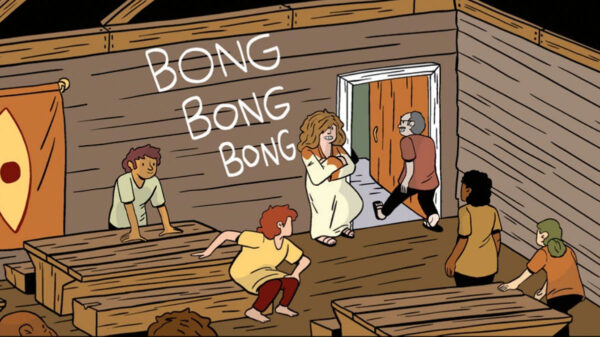
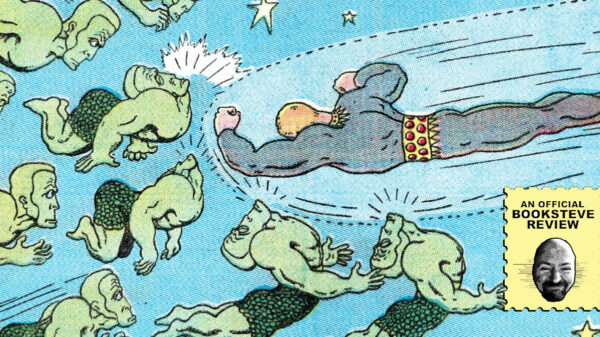
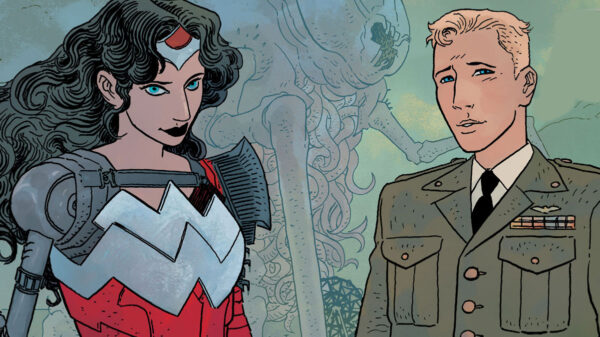









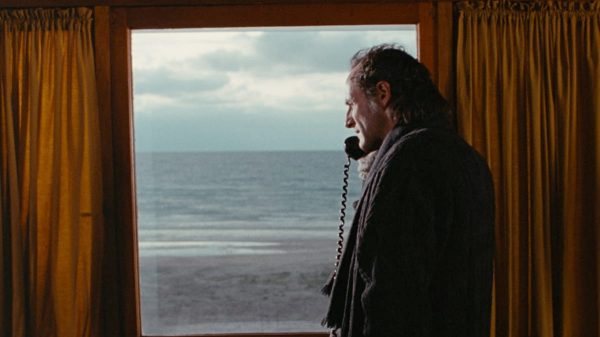
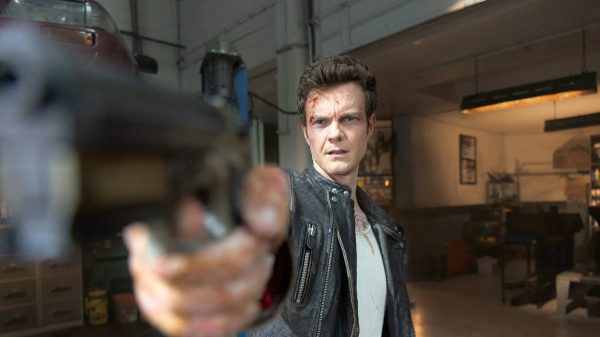
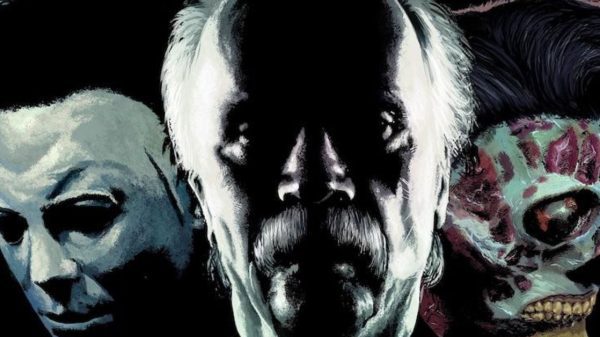
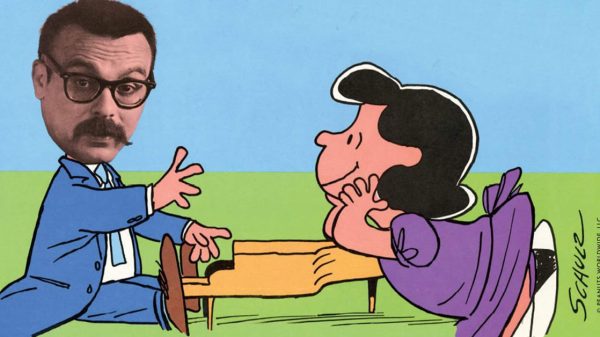
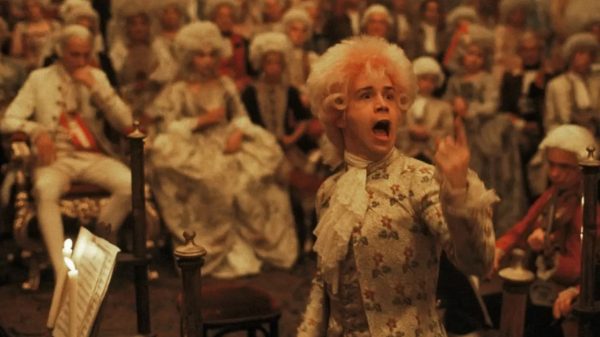











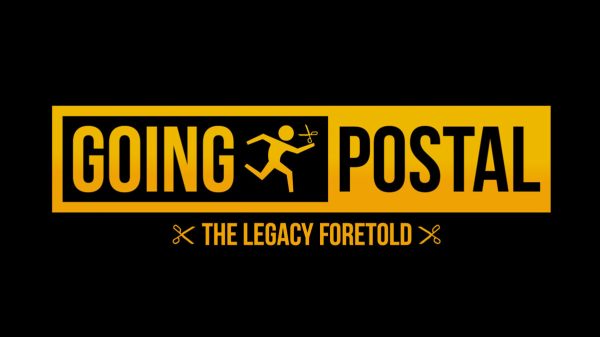
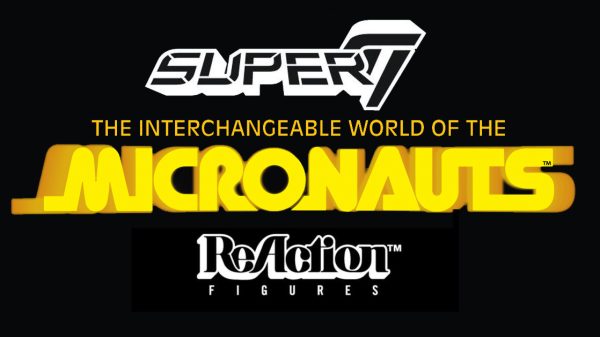
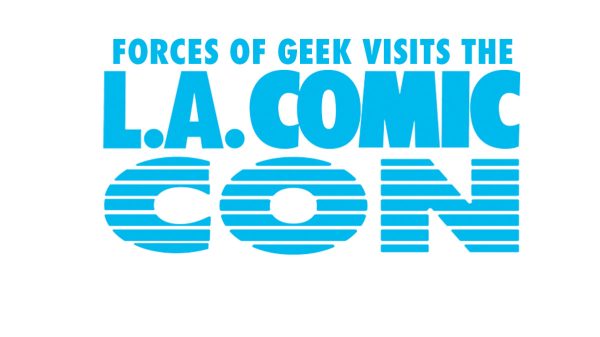
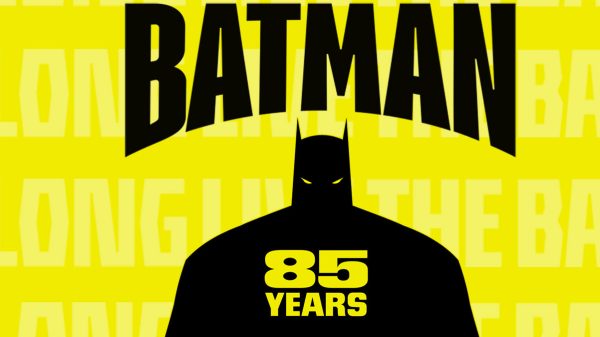


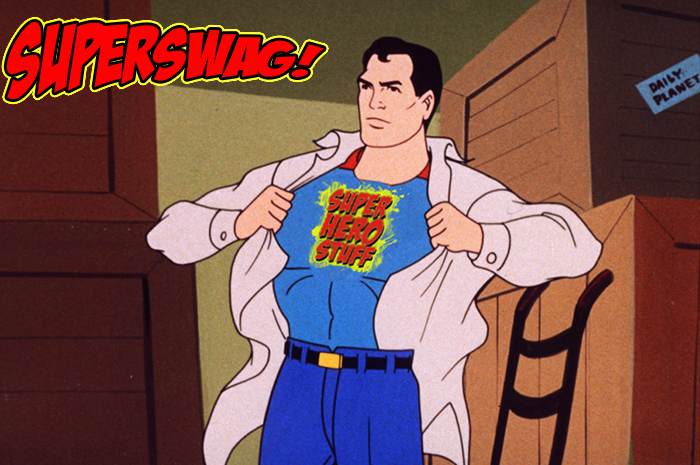

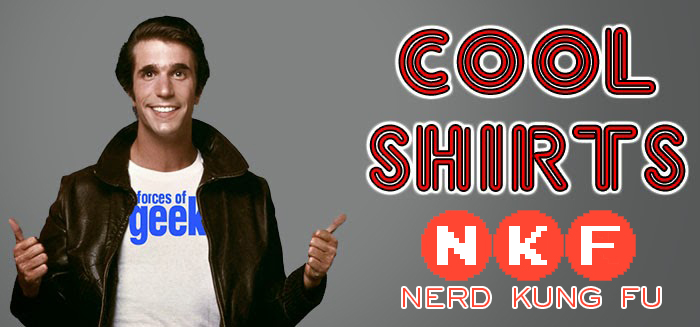
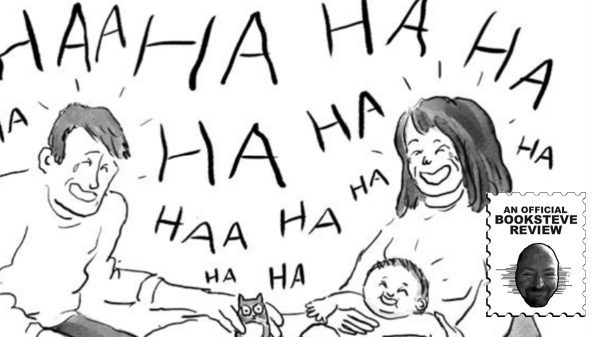



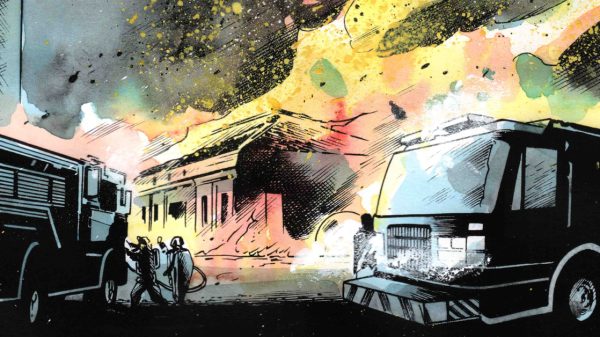




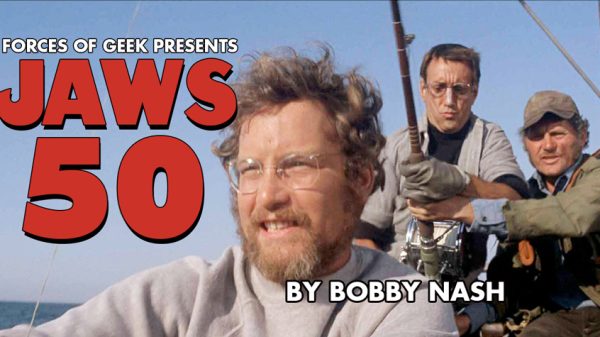









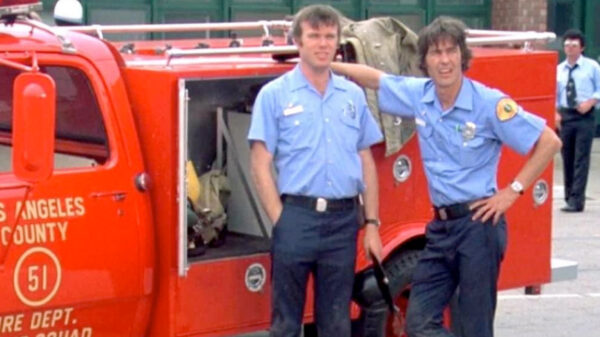
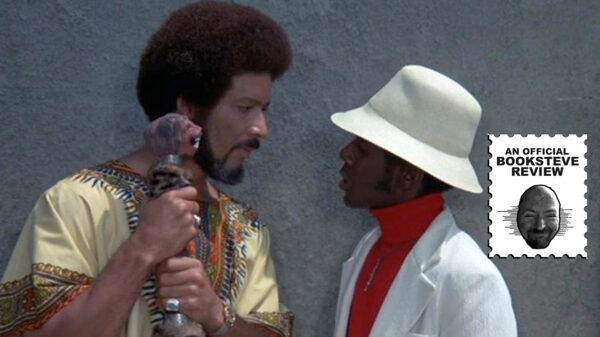
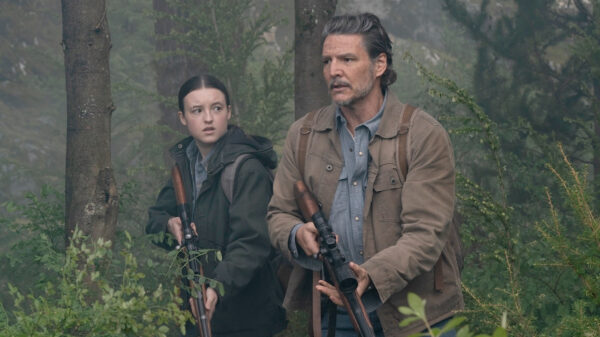




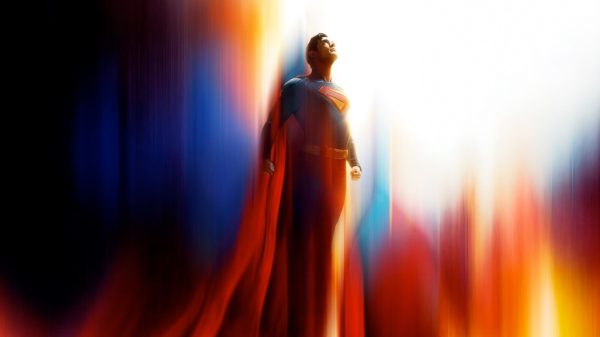
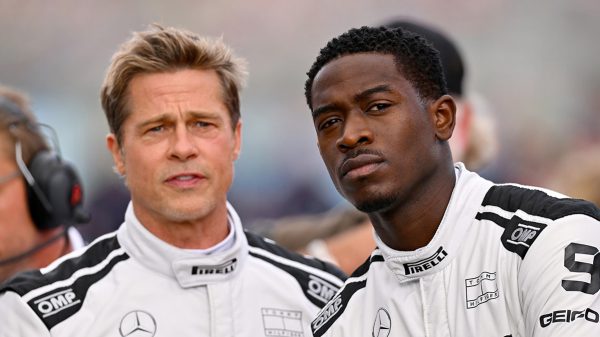




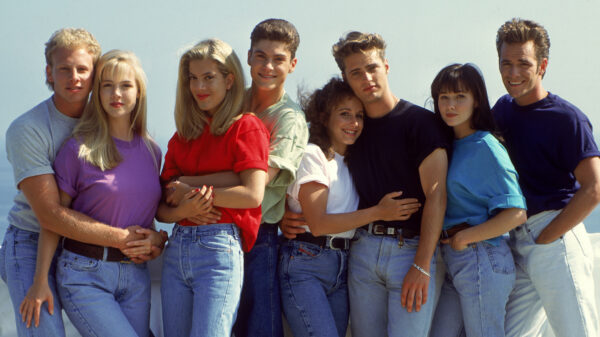
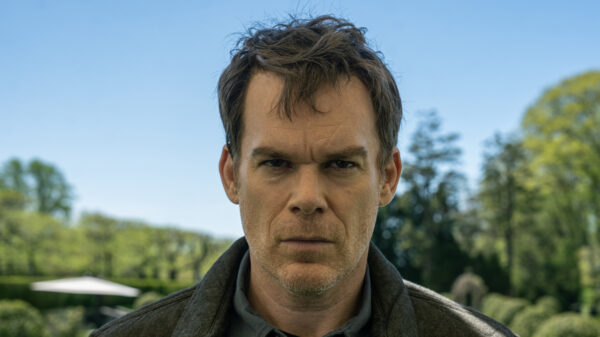
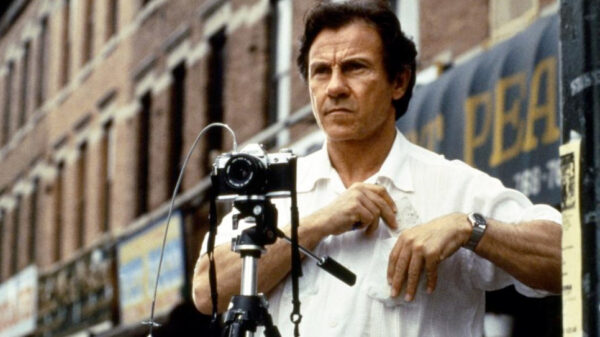
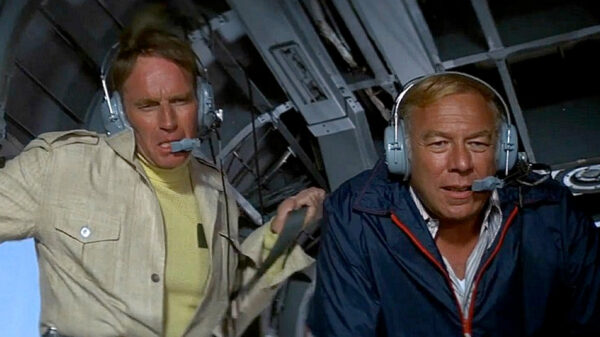
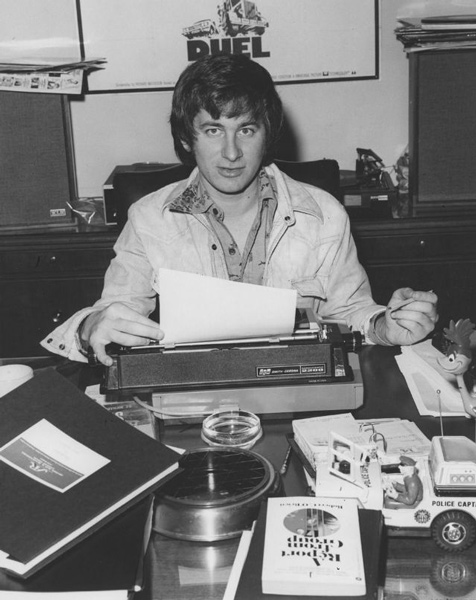








You must be logged in to post a comment Login